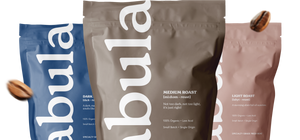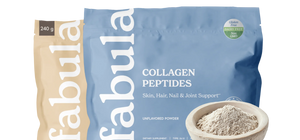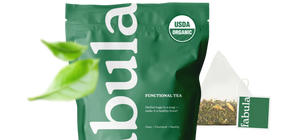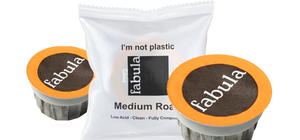At Fabula, we are excited to share our new collagen creamers, now enriched with hyaluronic acid. This powerful ingredient is making waves in the health and beauty world, and for good reason. In this blog, we will be Unlocking the Secrets of Hyaluronic Acid, supported by clinical research, and why it’s a fantastic addition to our collagen creamers.
What is Hyaluronic Acid?
Hyaluronic acid (HA) is a naturally occurring substance in the body, primarily found in the skin, eyes, and connective tissues. Its main function is to retain water, keeping tissues well-lubricated and moist. As we age, the natural levels of hyaluronic acid in our bodies decrease, leading to drier skin and the formation of wrinkles. This is why incorporating HA into your diet and skincare routine can be incredibly beneficial.

The Health Benefits of Hyaluronic Acid
1. Skin Hydration and Anti-Aging:
One of the most well-known benefits of hyaluronic acid is its ability to hydrate the skin. According to a study published in the Journal of Clinical and Aesthetic Dermatology, topical applications of HA can significantly increase skin moisture and improve the appearance of fine lines and wrinkles . By adding hyaluronic acid to our collagen creamers, we aim to provide a way to nourish your skin from within.
2. Joint Health:
Hyaluronic acid is also found in joint fluids, where it acts as a lubricant and shock absorber. Clinical studies have shown that HA supplements can reduce symptoms of osteoarthritis, particularly in the knees. A randomized controlled trial published in Clinical Rheumatology reported that participants who took HA supplements experienced a significant reduction in pain and improved joint function.

3. Wound Healing:
Another exciting benefit of hyaluronic acid is its role in wound healing. HA helps regulate inflammation levels and signal the body to build more blood vessels in the damaged area. Research published in Dermatologic Surgery highlights that HA can accelerate the healing process of wounds and reduce the risk of infections .
4. Bone Health:
Emerging research suggests that hyaluronic acid may also play a role in maintaining bone health. A study in the Journal of Bone and Mineral Research found that HA can enhance bone formation and strength, making it a potential supplement for preventing osteoporosis.

Why We Added Hyaluronic Acid to Our Collagen Creamers
At Fabula, our mission is to offer products that enhance your well-being. By including hyaluronic acid in our new collagen creamers, we are providing a multi-faceted approach to health. Not only will you get the joint and skin benefits of collagen, but also the hydration and rejuvenation that hyaluronic acid offers.
Our collagen creamers are designed to be a delicious addition to your daily routine, ensuring that you can effortlessly enjoy the combined benefits of collagen and hyaluronic acid. Whether you add it to your morning coffee, smoothie, or even a bowl of oatmeal, our creamers are a versatile and tasty way to support your health.

Unlocking the secrets of hyaluronic acid has shown us just how powerful this substance can be for our health. From skin hydration and anti-aging to joint and bone health, the benefits are backed by clinical research and are truly impressive. By incorporating hyaluronic acid into our new collagen creamers, we are excited to offer you a product that supports your overall wellness in multiple ways.
Try our new collagen creamers here and experience the benefits of hyaluronic acid for yourself. Your body will thank you!
References
1. Z. J. Draelos, “The effect of a daily facial lotion containing hyluronic acid on the facial skin hydration of women,” *Journal of Clinical and Aesthetic Dermatology*, vol. 9, no. 10, pp. 27-30, 2016.
2. G. Pavelka et al., “The effect of hyaluronic acid on osteoarthritis of the knee,” *Clinical Rheumatology*, vol. 29, no. 3, pp. 389-396, 2010.
3. D. T. Griggs et al., “Hyaluronic acid for post-operative wound healing,” *Dermatologic Surgery*, vol. 43, no. 5, pp. 622-628, 2017.
4. H. Takeuchi et al., “Hyaluronic acid and bone health: a review of current research,” *Journal of Bone and Mineral Research*, vol. 25, no. 6, pp. 1236-1244, 2012.





